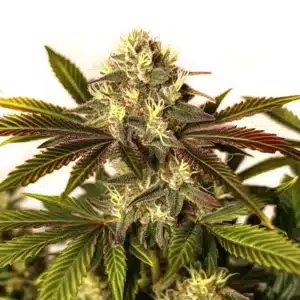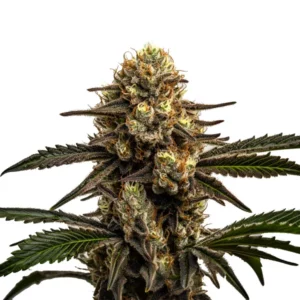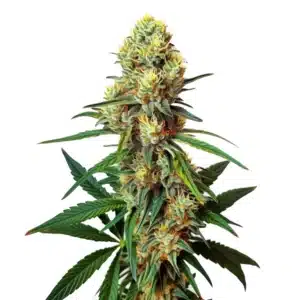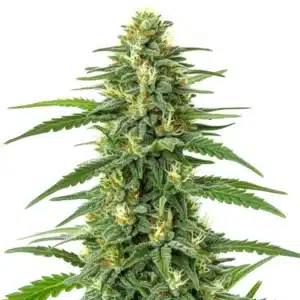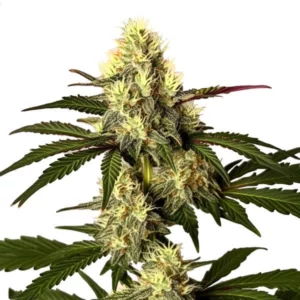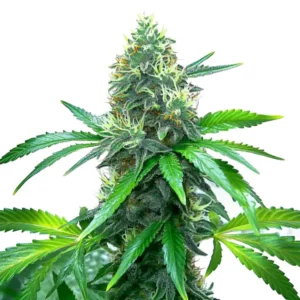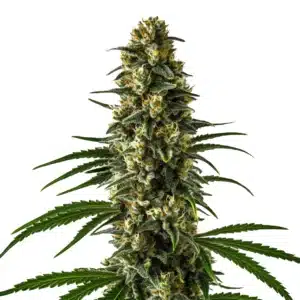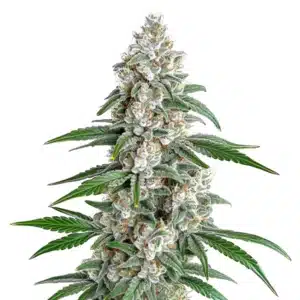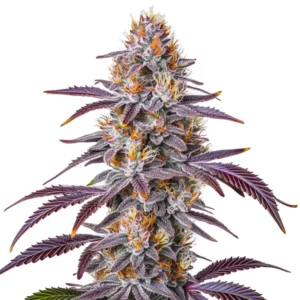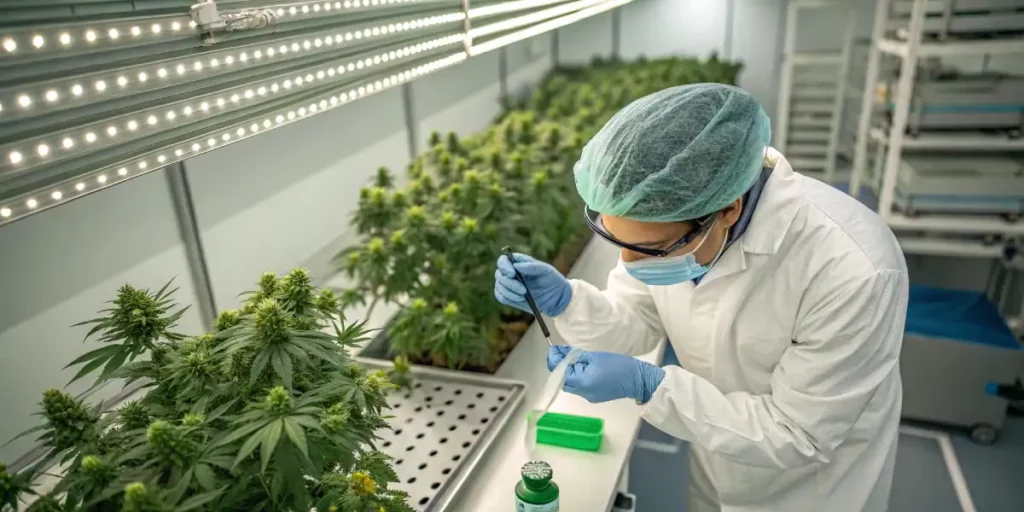
Unraveling the Potency of Cannabinoids, Terpenes, and Flavonoids
Cannabis is a complex plant, brimming with numerous compounds. Three of the most intriguing are cannabinoids, terpenes, and flavonoids. They’re not just fancy words on a science report; they play a significant role in your cannabis experience. These chemical compounds are responsible for the distinctive flavors, aromas, and effects of different cannabis strains.
The most well-known cannabinoids are THC (Tetrahydrocannabinol) and CBD (Cannabidiol). THC is the psychoactive compound that gets you high, while CBD has no psychoactive effects but is praised for its health benefits. However, these are just two of over 100 cannabinoids found in the cannabis plant.
Recommended Strains
Asian Dream
|
|
THC | 17% - 22% (Medium) |
|
|
Type | Feminized |
|
|
Yield | High |
|
|
Phenotype | 60% Indica / 40% Sativa |
Terpenes are aromatic compounds found in many plants, including cannabis. They give each cannabis strain its unique scent and flavor. From citrus to pine, sweet to skunky, the variety of aromas and flavors in cannabis is vast, thanks to terpenes. They also play a role in the plant’s therapeutic effects by acting synergistically with cannabinoids.
Health Benefits
Recent scientific studies on cannabinoids, terpenes, and flavonoids have shown that these compounds have potential health benefits. Cannabinoids like CBD are known to have anti-inflammatory, analgesic, and anti-anxiety properties. Some terpenes have shown potential in relieving stress, and flavonoids are known for their antioxidant effects.
Take the strain OG Kush for example. This popular strain is rich in the terpene caryophyllene, which has a spicy, woody aroma and can interact with the body’s endocannabinoid system, potentially offering anti-inflammatory effects.
Promos & Deals
Difference between Cannabinoids, Terpenes, and Flavonoids
While these compounds all exist in the cannabis plant, they each play a different role. Cannabinoids interact with the endocannabinoid system, affecting things like mood, pain, and memory. Terpenes contribute to the aroma and flavor and may modify the effects of cannabinoids. Flavonoids contribute to the color of cannabis and also have their own potential health benefits.
A good example of this synergy is the Girl Scout Cookies strain. This strain is rich in THC, the terpene caryophyllene, and the flavonoid quercetin. The combination of these compounds results in a potent strain with a unique flavor profile and potential health benefits.
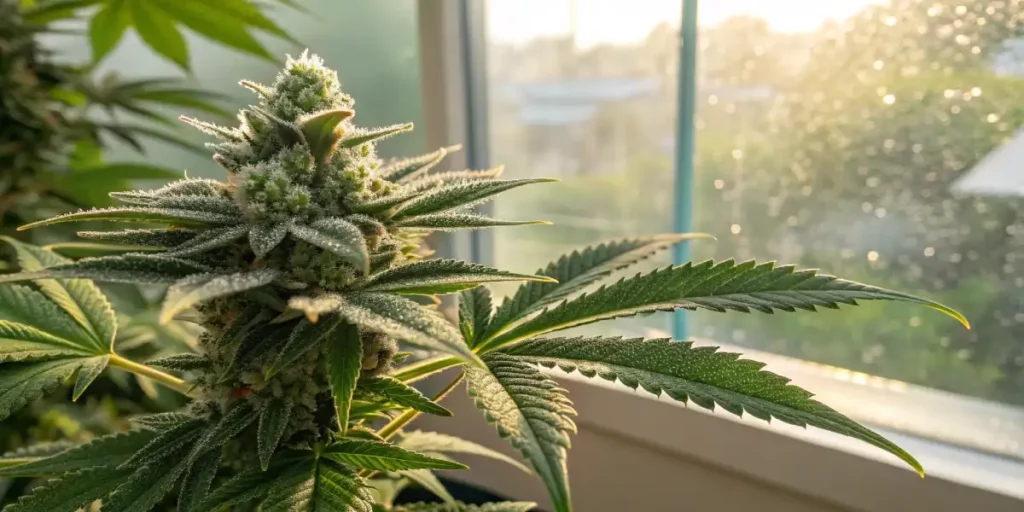
Natural Sources
Cannabis is a rich source of these compounds, but it’s not the only one. Many other plants, fruits, and herbs contain them. For example, echinacea contains compounds similar to cannabinoids, citruses contain terpenes, and berries contain flavonoids. However, cannabis is unique in that it contains a high concentration and variety of these compounds.
These compounds in cannabis also contribute to what is known as the ‘entourage effect.’ This is the theory that all the compounds in cannabis work together to enhance the plant’s effects, suggesting they work best together, each enhancing and balancing the effects of the others.
The Grower’s Role: Preserving These Compounds
It is important to understand that simply choosing a strain rich in these compounds does not guarantee they will be present in the final product you consume. The preservation of delicate terpenoids and flavonoids depends heavily on the skill of the grower and the drying and curing process the flowers have undergone.
A bad, overly rapid drying process or an improper cure can cause the plant to lose almost all of its volatile terpenes and flavonoids in just a few days. This is often why some cannabis may look appealing but have very little aroma or flavor. A skilled cultivator who carefully dries and cures their harvest is ensuring that these valuable compounds are preserved, leading to a richer, more complex, and ultimately more effective experience.

FAQs
What are the health benefits of cannabinoids, terpenes, and flavonoids?
Cannabinoids like THC and CBD have been studied for their potential to relieve pain, reduce inflammation, and reduce symptoms of anxiety. Terpenes are thought to have a wide range of effects, including anti-inflammatory and mood-enhancing properties. Flavonoids are known for their antioxidant effects.
What is the difference between cannabinoids, terpenes, and flavonoids?
Cannabinoids interact with the endocannabinoid system. Terpenes are responsible for the aroma and flavor. Flavonoids contribute to the plant’s color and may also have health benefits. They all work together in what is known as the “entourage effect.”
Can I get cannabinoids, terpenes, and flavonoids from sources other than cannabis?
Yes, these compounds are found in many other plants. However, the concentration and diversity of cannabinoids, terpenes, and flavonoids in cannabis are unparalleled.
Do all cannabis strains contain cannabinoids, terpenes, and flavonoids?
Yes, but the specific profile and concentration can vary greatly from strain to strain. This is why different strains have different effects, flavors, and aromas.
How do cannabinoids, terpenes, and flavonoids affect the taste and smell of cannabis?
Terpenes are primarily responsible for the taste and smell of cannabis, creating a wide range of flavors and aromas. Flavonoids can also contribute to the taste and color. Cannabinoids don’t contribute much to the taste or smell but play a crucial role in the effects.


